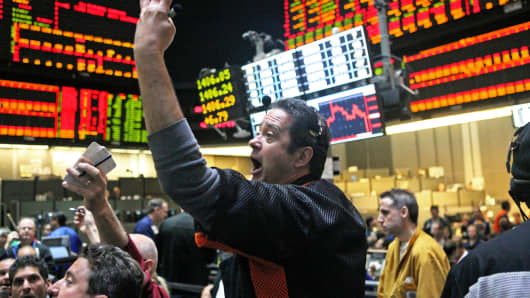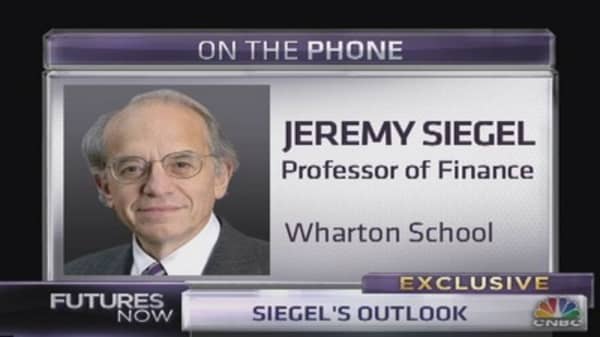The Dow fell 93 points to 15,518, and the S&P 500 fell 9 to 1697. The Nasdaq fell 27 to 3665. The Dow Transports and the Russell 2000 were the biggest losers. The Transports fell 1.3 percent to 6516, and the Russell lost 1 percent to 1052.
Art Cashin, director of floor operations at UBS, said stocks were sensitive to higher rates Tuesday though yields are not near the highs of last week. "I think the 10-year auction will be important. People will be watching that to get a sense of how things are going, to see how the bids fill in," he said.
(Read more: Surging US exports pare June trade gap)
"New money for the new month lasted two days," said Cashin.
Jack Ablin, CIO at BMO Private Bank, said he is not putting new money into U.S. big caps, and he would not be surprised to see a correction as the Fed reverses easing. As for now, "I think the market trades flat…I think that we're expecting some tapering, but we're not expecting liquidity to dry up unless we see something come over the transom that changes everyone's view – a wildly bullish or bearish jobs report, a failed auction, I don't know what. We have very low vol. There's a fair amount of complacency. Everyone is on vacation," he said.
But Ablin does think the market is extended, and it could see a 10 percent correction. "I'm more or less saying the safety net under this market is about 10 percent lower. If we were to remove the liquidity – the Fed were to pull the rug out from under the market, I'd say we'd get back to the 1570s which is 10 percent," he said.
What to watch
Besides the auction, there is more Fed speak including Cleveland Fed President Sandra Pianalto speaks at 1:40 p.m. on the regional economy in Cleveland, Ohio.
There is consumer credit at 3 p.m., and dozens of earnings reports. Time Warner,Ralph Lauren, AOL, Anglogold Ashanti, HollyFrontier, ING Group, Wendy's, Devon Energy, Marsh and McClennan, Duke Energy, and Carlyle Group report before the opening bell. Groupon, Green Mountain Coffee, Vale, Tesla Motors, Mondelez International, Sun Life, MBI, Jack in the Box, Diodes, Transociean, Prudential Financial, Westar Energy, American Water Works and Agrium report after the bell.
Updates to reflect that Philadelphia Fed President Charles Plosser is not speaking on the economy at 12:30 p.m. ET. His speech had been canceled Friday, according to a spokeswoman.
—By CNBC's Patti Domm. Follow here on Twitter @pattidomm.






